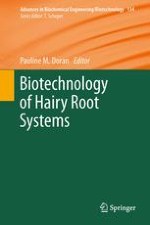2013 | OriginalPaper | Buchkapitel
Hairy Roots as a Vaccine Production and Delivery System
verfasst von : Marina Skarjinskaia, Karen Ruby, Adriana Araujo, Karina Taylor, Vengadesan Gopalasamy-Raju, Konstantin Musiychuk, Jessica A. Chichester, Gene A. Palmer, Patricia de la Rosa, Vadim Mett, Natalia Ugulava, Stephen J. Streatfield, Vidadi Yusibov
Erschienen in: Biotechnology of Hairy Root Systems
Verlag: Springer Berlin Heidelberg
Aktivieren Sie unsere intelligente Suche, um passende Fachinhalte oder Patente zu finden.
Wählen Sie Textabschnitte aus um mit Künstlicher Intelligenz passenden Patente zu finden. powered by
Markieren Sie Textabschnitte, um KI-gestützt weitere passende Inhalte zu finden. powered by
